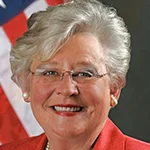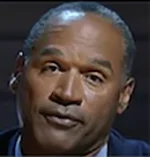 Peter Burger |
The “I love New York” campaign has been used to promote New York City for more than forty years. These days, Amazon CEO Jeff Bezos would most likely use different words to describe his feelings for the city.
Amazon’s success has been fueled by customers who love using the site to shop for a host of reasons. Even though a vocal bunch of holdouts relish disparaging it, New Yorkers are as ardent Amazon.com fans as anyone else.
But Amazon wasn’t feeling the love. After a few meetings with unions, the e-commerce behemoth packed up its HQ2 suitcases and departed NYC like a jilted lover, leaving stunned residents and politicians in its wake and $3 billion in tax breaks on the table. An outsider witnessing the drama would understandably conclude the company was a plague-infested invader, rather than a bearer of jobs with a projected average salary of $150,000.
NYC can be tough on even the biggest companies. Yet a public relations post-mortem reveals an Amazon ill-prepared to wage the PR battle needed to appeal to all NYC’s constituencies, including liberal Democrat elected officials and union leaders, to name a few.
Whether you’re moving into a cramped, expensive studio apartment or setting up your second corporate headquarters, you can’t give up that easily on the Big Apple. Amazon could’ve donned a sturdy PR pith helmet and, messaging machete in hand, carved its way through the NYC media jungle. A full-throated PR campaign would’ve gone a long way to making the deal happen by enabling the e-commerce giant to shape its own narrative and address the issues raised by the deal’s opponents.
Hard left off the Queensboro Bridge
The web’s reach and speed not only enabled Amazon’s rise, but also the meteoric ascent of Alexandria Ocasio-Cortez to the fore of progressive politics and the national political scene. That Amazon failed to factor a progressive Democrat and labor union storm into its plans, however, is simply hard to fathom.
Amazon “may not have been prepared for the full-court onslaught that included so much hostility within the community, stoked by the city’s media,” said Allan Ripp, head of the New York-based press relations boutique Ripp Media. “I have to believe Amazon has excellent political radar and was well aware of New York’s increasing political tilt towards progressivism. New York’s unions historically have substantial clout. It could not have been a surprise that the unions and some politicians would be hostile to the company’s plans for a non-union workforce in Queens or the extent of tax concessions offered by the city.”
Of course, being forewarned doesn’t necessarily mean being forearmed; preparation matters.
Amazon “seems to have failed to anticipate the potential impact of this leftward turn,” said Steve Vitoff, a New York PR veteran. Only days before the HQ2 reversal, the newly Democratic New York State Senate nominated diehard deal-opponent Sen. Michael Gianaris of Queens — whose district includes Long Island City — to the Public Authorities Control Board, an entity wielding the potential to veto the incentive package. The New York Post reported Sen. Gianaris had rebuffed three invitations to meet with Amazon representatives.
Meetings of (different) minds
With the rise of the Cortez Democratic party, it behooved Amazon to address the public on its own turf, among whom its regular customers, if not being major fans, wouldn’t be opposed to the company setting up a larger shop in the neighborhood. Given its well-known avoidance of union labor and unionization among its employees nationally, what could the company have done better PR-wise regarding labor?
“Amazon should definitely have made a more concerted effort to engage publicly with union leaders and rounded up its own experts to address skepticism and illustrate the many benefits its workforce enjoys, and to show the company’s commitment to improving working conditions for all its employees,” Ripp said. According to Ripp, such efforts could’ve taken the form of staged town-hall dialogue and discussions in the manner political leaders customarily meet with opposing nations and parties.
Just one day before it backed out of the deal, Amazon was engaged in a series of closed-door meetings with labor leaders. Notably, however, unions weren’t mentioned in the deal’s Memorandum of Understanding, suggesting Amazon was relying on public brand recognition and the overall popular appeal of the deal to work in its favor. Indeed, independent polls showed the majority of NYC residents approved —56 percent of respondents (23 points more than objectors) approved of the deal — with 70 percent of African Americans and four of five Latino residents in favor.
Gentrification, deferred
While unemployment in New York City in December 2018 was 3.9 percent — a record low — New York isn’t going to make up for HQ2’s loss. A total of 25,000 future jobs and $27 billion in new tax revenue generated over 25 years represents a nine-fold return on the investment the city and state were making in the form of tax incentives. This doesn’t include the 1,300 construction jobs and 107,000 in total direct and indirect jobs the deal was projected to create. This “multiplier effect” coming to fruition would’ve generated dollars to put toward the realization of priorities — from transit to affordable housing — that would take the sting out of any resulting “gentrification” and residents being priced out of the neighborhood.
Yet Amazon has been served notice, by progressives who helped torpedo the deal, that it’s guilty of ignoring economic inequality. Granted, Amazon agreed to contribute $5 million for workforce development and host job training sessions and job fairs at Long Island City’s Queensbridge Houses and to build a school on its campus and a tech startup incubator. But this is a relatively modest commitment for a 25,000-employee headquarters. In short, the e-commerce giant could’ve done much more to demonstrate its commitment to solid corporate citizenship and its ability to enhance quality of life for Queens residents.
The corporate “welfare” trap
A flurry of news coverage suggested HQ2 was a giveaway, a perception Amazon took surprisingly tepid public efforts to combat. Had Amazon representatives done a better job to illuminate the deal in the context of incentives, then the idea of HQ2 as a form of corporate welfare might have been significantly diminished.
According to Vitoff, a few simple messages delivered through the right vehicles could’ve gone a long way in improving perception, starting with the common but oft-misused term: “subsidies.” “Five-sixths of the package would have come in the form of forward-looking, performance-based incentives, not ‘subsidies,’” Vitoff said. “These incentives represent potential, future money, not existing money. Yet opponents would sometimes incorrectly frame the package as a taxpayer gift coming out of some existing pool of taxpayer money.”
The benefit of Amazon’s subsidies stood to be substantial. The company would get back approximately $48,000 in tax incentives per job created. What’s more, to build its campus of at least four million square feet on Long Island City’s East River waterfront, New York State would allow Amazon to override local regulations on the lot, currently zoned for manufacturing space. This way, the company could avoid the city’s extensive land use review process.
A muscular PR campaign would’ve pulled out all the stops to make NYC more comfortable with this auspicious new Long Island City neighbor and New York citizen.
The multiplier effect
The employee population at HQ2 promised to support the growth of many independent entrepreneurial businesses serving the growing number of residents and professionals in the community. A story begging to be told was the growth of the kind of local enterprises that help neighborhoods like Long Island City emerge and flourish, businesses like restaurants, cafes, convenience stores, daycare centers and multiple other enterprises employing local residents.
According to Ripp, “Amazon could’ve illustrated the powerful multiplier effect its growing presence would have generated through hiring, taxes, revenue generation and other benefits. A strong presentation of those contributions directly to the community could’ve gone a long way in refuting the progressive opposition that the company’s expansion benefited the rich or ran counter to the interests of local constituents.”
Indeed, the name HQ2 looks exponential. Why not capitalize on that? These messages could’ve been delivered through a vigorous public affairs campaign using various vehicles including op-ed commentary, radio spots, social media and interviews with Amazon’s New York-based employees.
Conspicuously absent from Amazon’s campaign was the presence of its CEO, Jeff Bezos, though perhaps it was too soon after his extra-marital affair to make his presence felt. Bezos appearing to speak with Queens residents could’ve gone a long way in turning the tide of resistance.
HQ2, interrupted
Companies have personalities too. In the case of its HQ2 withdrawal, Amazon’s personality was seen as arrogant and petulant.
In a nutshell, PR consists of compelling information communicated by the right people to the right people. Namely, the message of how HQ2 would benefit working class, small business owners and consumers — not just technology and knowledge workers — needed to reach these audiences via news sites, op-eds, radio and more vehicles. Amazon, a master of logistics, has a large warehouse facility in Staten Island. Enlisting these workers to speak on its behalf would’ve provided a major counterpoint to the company’s critics.
What was the “Amazon HQ2 narrative?” Was there one? It’s hard to tell. When you don’t speak up for yourself, someone else crafts the story for you, which in Amazon’s case overpowered the brand the company has forged. The result was activists hijacked the storyline of a deal which, despite its faults, promised jobs and tax revenues, and attracted robust popular support and represented a net positive for New York.
The truth of the real economy lived by the average person lies between the two polarities, between the noisy message of opposition groups looking to stymie incentives for corporations and an unemployment rate pegged at less than four percent that doesn’t include people who’ve given up looking for work. NYC really did want Amazon HQ2. A stronger, better PR effort can save the next big deal from suffering a similar fate.
***
Peter Burger is an omnichannel content consultant and communications writer who brings narrative life to brands, products and services, organizational cultures and people. He’s worked with the likes of EY, Deloitte, JPMorgan Chase, Towers Watson, New York Life and the Metropolitan Transportation Authority. View his portfolio at aislewpeter.com.


 Southern governors claim they know what's best for their working class, and it's not pay raises... A Ukrainian human rights group played a key role in convincing House Speaker Mike Johnson to hold a vote to send arms to Ukraine, Israel and Taiwan... Trump Media & Technology Group blames short-selling and not lousy outlook for its stock slump.
Southern governors claim they know what's best for their working class, and it's not pay raises... A Ukrainian human rights group played a key role in convincing House Speaker Mike Johnson to hold a vote to send arms to Ukraine, Israel and Taiwan... Trump Media & Technology Group blames short-selling and not lousy outlook for its stock slump. The techniques deployed by OJ Simpson's defense team in the 'trial of the century' served as a harbinger for those used by Donald Trump... People worry about the politicization of medical science just as much as they fret about another pandemic, according to Edelman Trust Barometer... Book bans aren't restricted to red states as deep blue Illinois, Connecticut and Maryland challenged at least 100 titles in 2023.
The techniques deployed by OJ Simpson's defense team in the 'trial of the century' served as a harbinger for those used by Donald Trump... People worry about the politicization of medical science just as much as they fret about another pandemic, according to Edelman Trust Barometer... Book bans aren't restricted to red states as deep blue Illinois, Connecticut and Maryland challenged at least 100 titles in 2023. The NBA, which promotes legalized gambling 24/7, seems more than hypocritical for banning player for placing bets... Diocese of Brooklyn promises to issue press release the next time one of its priests is charged with sexual abuse... Truth Social aspires to be one of Donald Trump's iconic American brands, just like Trump University or Trump Steaks or Trump Ice Cubes.
The NBA, which promotes legalized gambling 24/7, seems more than hypocritical for banning player for placing bets... Diocese of Brooklyn promises to issue press release the next time one of its priests is charged with sexual abuse... Truth Social aspires to be one of Donald Trump's iconic American brands, just like Trump University or Trump Steaks or Trump Ice Cubes. Publicis Groupe CEO Arthur Sadoun puts competition on notice... Macy's throws in the towel as it appoints two directors nominated by its unwanted suitor... The Profile in Wimpery Award goes to the Ford Presidential Foundation for stiffing American hero and former Wyoming Congresswoman Liz Cheney.
Publicis Groupe CEO Arthur Sadoun puts competition on notice... Macy's throws in the towel as it appoints two directors nominated by its unwanted suitor... The Profile in Wimpery Award goes to the Ford Presidential Foundation for stiffing American hero and former Wyoming Congresswoman Liz Cheney. JPMorgan Chase chief Jamie Dimon's "letter to shareholders" is a must-read for PR people and others interested in fixing America and living up to its potential... Get ready for the PPE shortage when the next pandemic hits... Nixing Netanyahu. Gaza carnage turns US opinion against Israel's prime minister.
JPMorgan Chase chief Jamie Dimon's "letter to shareholders" is a must-read for PR people and others interested in fixing America and living up to its potential... Get ready for the PPE shortage when the next pandemic hits... Nixing Netanyahu. Gaza carnage turns US opinion against Israel's prime minister.


 Have a comment? Send it to
Have a comment? Send it to 
No comments have been submitted for this story yet.